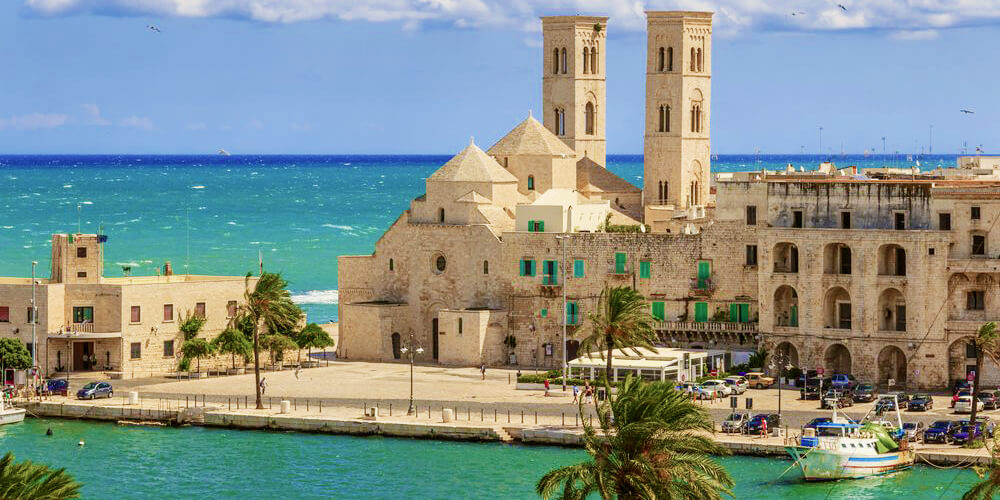The monuments of the faith are a serene forest
From the epic of God's caves to the powerful abbeys; from the archangel of fire to the cut heads: centuries of a fascinating and contradictory religious history have unfolded in this region among the hustle and bustle of Crusaders, thefts of sacred bodies, trafficking of relics in an artistic itinerary dominated by the Romanesque and Baroque.
Saints of every kind in competition with the cult of the Madonna, the exhausting pilgrimages, the dramatic processions of the Holy Week between Jesuit theatricality and Spanish pomposity, the popular festivals between folklore and consumerism: here the faith is consumed between secular rituals and modern exhibitions.

Among the most important places of the spirit of Puglia, worth a visit:
The Cathedral of Troy (FG) with its wonderful facade adorned with an immense rose window;The solemn basilica of St. Nicholas in Bari, whose crypt houses the remains of the Holy Thaumaturge;The Romanesque cathedral of Ruvo di Puglia, with its complex architectural history; The old cathedral of Molfetta, a magnificent Romanesque church with three domes that is reflected directly in the sea.The Brindisi's Santa Maria del Casale, decorated with valuable Byzantine frescoes; That masterpiece of Lecce Baroque is Santa Croce a Lecce.The underground crypt of Santa Margherita and other rock churches in the vicinity of Mottola. Not to be missed, however, in the Foggia area, is the church of Santa Maria Maggiore in Siponto and San Leonardo in Siponto, with a crypt as large as the church.The Sanctuary of San Michele Arcangelo, in the Gargano.In Otranto, in the Salento area, one cannot overlook the Cathedral, which boasts on the floor a majestic mosaic dating back to the 11th century depicting the tree of life and where the remains of part of the 800 martyrs are kept, people who renounced their conversion to Islam and sacrificed their lives during the invasion of the Turks in 1482.
About the author
Written on 12/02/2019



Carmen Angiulli